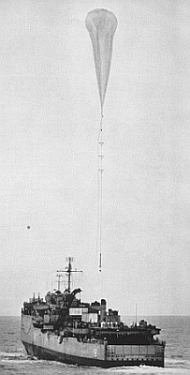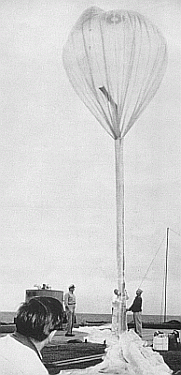
The USS COLONIAL was built by the Newport News Shipbuilding and Drydock Company in Virginia and was launched on 28 February 1945. It was a landing ship dock of the "Casa Grande" class conceived during World War II to sail to the site of an amphibious landing, carrying launch assault boats to launch them directly from a well-deck in the rear of the vessel. Also they served as "dry docks" to repair other vessels.
Upon completion and fitting out at the Norfolk Navy Yard, the Colonial was commissioned on 15 March 1945. After a shakedown cruise on Chesapeake Bay, she reported to the Chief of Naval Operations for duty on 16 June 1945.
After Japan surrender, the ship joined the Pacific teathre visiting Guadalcanal, the Philippines, Okinawa, and the Marianas Islands before returning to Norfolk, Virginia, via Hawaii and the Panama Canal. Through 1947, 1948 and 1949, COLONIAL participated in several amphibious training exercises, operating along the East Coast from Cuba and Puerto Rico northward to Newfoundland.
When the Korean War broke out in June 1950 COLONIAL was dispatched immediately to the West Coast for further routing to the Far East. COLONIAL initiated her Korean service by landing tank elements of the First Marine Division during support operations of the "Inchon Landings" in September 1950. Later mechanized and troop elements were landed at Wonsan and in December of 1950, COLONIAL was one of the last ships to leave Hungnam in the evacuation of that area. On Completion of a month of mine sweeping duty along the eastern coast of Korea, COLONIAL started home having spent a full year of duty in the Far East. It will go back to the Korean operations theatre on January 1952, August 1953 and January 1955.

In 1956, after diverse modifications to his structure and special training of his crew, the USS COLONIAL was assigned to the operation "San Diego High". This operation -whose name originated in the characteristic pressure system in the area- was carried out in the second half of July, in open sea 350 miles Southeast of San Diego, California. The choosing of the site was related to safety reasons: the open seas offered a risk free environment to perform the sort of "instant rocketry" needed during the operation.
The campaign was developed by the Naval Research Laboratory with the objective to study x-rays and the Lyman-Alpha radiation, produced in the high atmosphere as a side effect of a solar explosion and how this radiation affects the ionosphere. The experiments were conducted by launching each morning from the helicopter deck of the ship, a balloon carrying an instrumented DEACON rocket: a combination also known as "Rockoon". After the balloon arrived at float altitude the USS PERKINS (a destroyer also asigned at the operation that had a higher speed than the COLONIAL) started to pursue the drifting balloon. During the entire operation the scientists onboard the COLONIAL were in permanent contact with four observatories in New Mexico, Tokyo, San Francisco, and city of Mexico keeping a close eye to the sun to detect any signal of a solar explosion. As soon as a flare occured, a signal was relayed from the COLONIAL to the PERKINS (wich mantained a close tracking over the balloon flight path) to fire the DEACON rocket onboard the balloon to try to obtain traces of radiation in the ionosphere. A total of 10 rockoons were put aloft during the entire campaign.
The operation had an extensive coverage on the April 1957 issue of the National Geographic Magazine, with a journalist and a photographer on the ship.
That was the only involvement of the ship on stratospheric balloons launches.
After that COLONIAL participated in several deployments in the Far East, the Caribbean and even take part in several amphibious operations in the Vietnam War. Finally was decomissioned on 30 June 1970, after more than twenty five years of service in the U. S. Navy.
Table of balloons launched from the USS Colonial (LSD-18)
| Date | Hour | Flight Duration | Experiment | Payload landing place or cause of the failure |
|---|---|---|---|---|
| 7/17/1956 | 15:40 ? | --- | ROCKOON (Rocket-Balloon) | Payload no recoverable |
| 7/18/1956 | 15:46 ? | --- | ROCKOON (Rocket-Balloon) | Payload no recoverable |
| 7/19/1956 | 15:21 ? | --- | ROCKOON (Rocket-Balloon) | Payload no recoverable |
| 7/20/1956 | 15:51 ? | --- | ROCKOON (Rocket-Balloon) | Payload no recoverable |
| 7/21/1956 | 17:18 ? | --- | ROCKOON (Rocket-Balloon) | Payload no recoverable |
| 7/22/1956 | 17:57 ? | --- | ROCKOON (Rocket-Balloon) | Payload no recoverable |
| 7/24/1956 | 14:07 ? | --- | ROCKOON (Rocket-Balloon) | Payload no recoverable |
| 7/25/1956 | 15:15 ? | --- | ROCKOON (Rocket-Balloon) | Payload no recoverable |
| 7/26/1956 | 15:28 ? | --- | ROCKOON (Rocket-Balloon) | Payload no recoverable |
| 7/27/1956 | 15:30 ? | --- | ROCKOON (Rocket-Balloon) | Payload no recoverable |
If you consider this website interesting or useful, you can help me to keep it up and running with a small donation to cover the operational costs. Just the equivalent of the price of a cup of coffee helps a lot.

